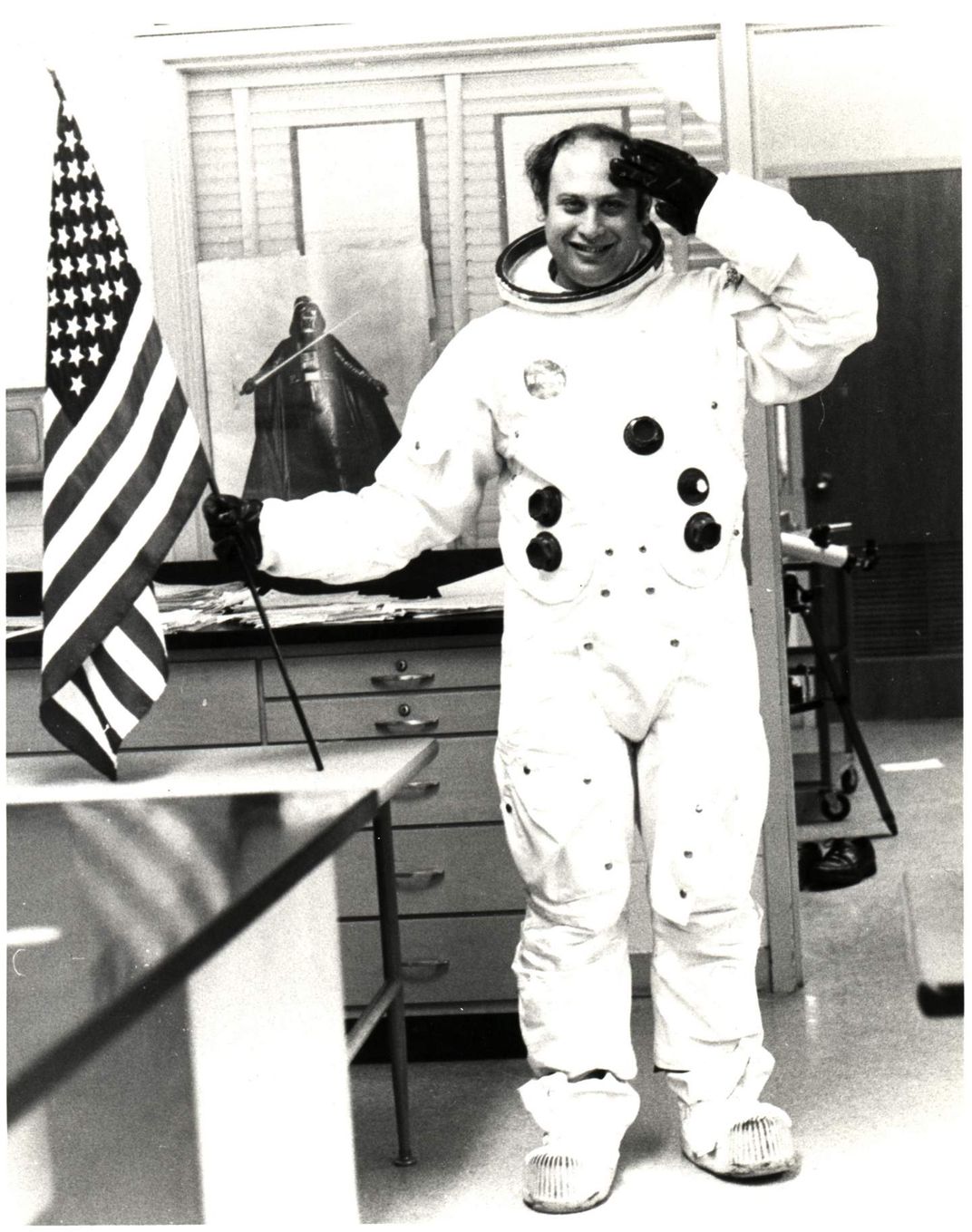Herbert Desind: A Passion for Spaceflight
The Archives of the National Air and Space Museum holds three million images in various photographic formats, covering the breadth and depth of the history of aviation and space flight. One such collection is the Herbert Stephen Desind Collection, which covers the history of space flight and exploration.
:focal(878x482:879x483)/https://tf-cmsv2-smithsonianmag-media.s3.amazonaws.com/blogging/featured/4935_640.jpg)
The Archives of the National Air and Space Museum holds three million images in various photographic formats, covering the breadth and depth of the history of aviation and space flight. One of the strengths of our collection is the variety of subjects our collections cover. One such collection is the Herbert Stephen Desind Collection, which covers the history of space flight and exploration.
Herbert Desind (1945-1992) was a high school science teacher who lived and worked in the Maryland suburbs of Washington, D.C. Desind was not only a teacher, but a passionate spaceflight enthusiast, who used model rocketry as an outlet for his passion. He not only made model rockets, he wrote about them for the publications of the National Association of Rocketry, model rocketry’s main organization. He also used spaceflight and rocketry as teaching aids in his science classes whenever he could. One type of model rocket he favored was the Cineroc, which was a model rocket with a nose cone that held an 8mm movie camera with a spool of film for eight to ten seconds of time, enough to record a launch. He had such a collection of these rockets and flew them so frequently that amongst rocketeers he was known as “Mr. Cineroc.”
For his writing efforts, Desind contacted aerospace firms and organizations around the world, requesting photographs either for specific needs, or to generally find out what they had to offer. By the size of the collection, it would appear that his requests were very rarely denied.

In 1991, Desind was named Science Teacher of the Year by Prince George's County and the Potomac Electric Power Company. Desind passed away in October of 1992. On November 17, 1994, the Herbert Desind Memorial Space Awareness Center, a state-of-the-art facility, was created and dedicated at Laurel High School in Laurel, Maryland where he taught for most of his teaching career. Today that Center houses the Cooperative Satellite Learning Project (CSLP) class as well as other science classes. The CSLP is a business, government, and educational partnership, focusing on space sciences and engineering. One of the sponsors of CSLP is the National Aeronautics and Space Administration (NASA).

We were extremely pleased when Mr. Desind’s family contacted us and offered his material to the national collection, and we immediately took steps to bring in the collection. First, we took a trip to survey the material at his father’s home in Silver Spring, Maryland. Based on the survey, we estimated that the collection consisted of material that would be a valuable addition to the Museum’s collections, as it not only covered crewed and non-crewed spaceflight, but also military rockets and missiles, and many images of aircraft that were found wanting in the Museum’s holdings. We knew the material would be a wonderful addition in aiding us in telling the stories to inspire those interested in Air and Space history and technology.
In 1997 the Archives traveled again to the Desind home, this time to pack and move the collection to the NASM Paul E. Garber Facility in Suitland, Maryland. Several members of the Archives staff packed the material, keeping it in the original order. The boxes were then loaded into the Museum’s vehicle for transfer.
After processing, the collection amounted to 110 cubic feet of material. The collection consists mostly of photographs, including black and white prints, color prints and transparencies. Most of the documents in the collection are correspondence between Desind and the firms sending him the material. In spite of his model rocketry interests, there are very few technical drawings on the subjects in the collection.
The Desind collection (NASM 1997-0014) is currently housed at the Archives facility at the Steven F. Udvar-Hazy Center in Chantilly, Virginia. A finding aid with selected digitized material can be found on the Smithsonian Online Virtual Archives. Please contact the National Air and Space Museum Archives via our online research request if you have any questions.*
October is American Archives Month! You can find postings about our collections and activities by the staff of the National Air and Space Museum Archives.
Brian Nicklas is a Museum Specialist for the National Air and Space Museum Archives. He is the author of American Missiles: The Complete Smithsonian Field Guide.
* Please note at the time of this post in October 2020, the National Air and Space Museum Archives is closed to researchers due to public health precautions. Archivists have limited access to our collections, so it may take longer to respond and some materials may be unavailable. If research topics are extensive, we may ask that researchers contact us when we reopen our reading rooms to schedule an in-person research appointment.
